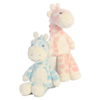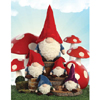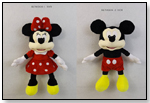|
|
Bartholomew Bear Bathrobe Craze (Jellycat) 5/6/2025 When a ten‑inch teddy wrapped in a miniature towelling robe started crashing TikTok “For You” feeds last winter, even seasoned toy buyers were caught off‑guard. In an era of fast‑cycling trends, Bartholomew Bear Bathrobe—a plush from London‑based soft‑toy house Jellycat—somehow managed to be both comfort object and lifestyle statement: the embodiment of Gen Z’s collective craving for self‑care, whimsy, and a touch of performative nostalgia. Retailers couldn’t keep him in stock. Collectors queued at dawn. An entire sub‑economy of resale and counterfeit sprung up in weeks. What makes one small bear such a big deal, and who are the people quietly building the empire behind his velvety smile? Meet Bartholomew in His BathrobeAt first glance, Bartholomew is classic Jellycat: buttery‑soft polyester plush, pebble‑smooth “beans” adding just enough heft in tummy and paws, and the brand’s trademark milk‑chocolate fur. The twist is his detachable white bathrobe—complete with floppy bunny ears on the hood and a tiny towelling belt—that transforms an ordinary teddy into a miniature spa influencer. The robe is more than a gag costume. Parents report toddlers practising motor skills while dressing and undressing the bear; older kids stage elaborate “self‑care Sunday” photo shoots. Adult collectors, meanwhile, delight in swapping custom robes knitted by Etsy artisans. Yet cuteness comes with caveats. The robe’s high‑loop towelling pills in a clothes‑dryer, so Jellycat’s official care instructions insist on cool‑water washes and air‑drying. And at USD $48 for ten inches of fluff, Bartholomew is decidedly premium—roughly double the price‑per‑inch of many mass‑market teddies. Still, fans swear the value sits in the details: the dense, low‑sheen pile that resists matting, the perfectly proportioned snout that photographs well from every angle, and the squeak‑free beans that let the bear “sit” naturally on a shelf. Add Jellycat’s stitched eyes (no buttons to pop off) and you have a giftable soft toy that meets both ASTM and EN‑71 safety standards from birth. Related:
1 | “Self‑Care” TeddyThe robe isn’t just a gimmick: parents say toddlers practise dexterity by dressing him; adult collectors stage #SelfCareSunday photo‑shoots and commission custom robes on Etsy. • Specs: 10 in H (≈ 8.7 in seated), polyester pile, PE bean weighting, EN‑71 & ASTM F963 compliant. 2 | The Design Minds Behind the SoftnessBrothers Thomas & William Gatacre founded Jellycat in London in 1999 with one mantra—“make beautiful things people remember.” About 25 designers still work from that London studio, mood‑boarding textures from architecture and runway shows. Every prototype must survive:
Only then does it join the January or July launch line‑up. Jellycat stayed private, topping £200 million revenue in 2024 while issuing a £58 million dividend to the founding family. Jellycat 3 | Why It Keeps Selling Out
4 | Hands‑On ReviewPros
Cons
5 | Spotting the Real Deal
6 | Care & Longevity Tips
Handled this way, a Jellycat can survive years of tea parties and still look showroom‑fresh. 7 | Sustainability Snapshot
8 | Comparable “Robe” Friends
*May 2025 U.S. retail averages. 9 | Where to Watch, Shop & Learn More
(All links open in a new tab so you can keep reading.) 10 | Final TakeIf you crave a plush that doubles as a wellness‑meme prop—and you’re willing to baby that tiny robe—Bartholomew Bear Bathrobe is worth the splurge. Jellycat’s obsessive design process delivers a huggable artefact that can outlast fashion cycles, while the limited‑run model keeps collectors happy (and sometimes frantic). Prefer hot‑wash convenience or a lower price? Steiff, GUND, or Aurora offer solid robe‑wearing alternatives. Otherwise, snap up Bart fast before he embarks on yet another sold‑out spa retreat. Related:  Writer's Bio: Driven by a fascination with how young people learn, grow, and connect, Laura N. Larsson has spent years researching the role of play and social media in child and adolescent development. Since 2012, she has combined her ecommerce background with in-depth interviews of children and teenagers, producing insightful articles that explore the evolving interplay between play, communication, and online interaction. Read more articles by this author Writer's Bio: Driven by a fascination with how young people learn, grow, and connect, Laura N. Larsson has spent years researching the role of play and social media in child and adolescent development. Since 2012, she has combined her ecommerce background with in-depth interviews of children and teenagers, producing insightful articles that explore the evolving interplay between play, communication, and online interaction. Read more articles by this author |
| |||||||||||||||||||||||||||||||||||||||||||||||||||||||||||
Disclaimer Privacy Policy Career Opportunities
Use of this site constitutes acceptance of our Terms of Use.
© Copyright 2025 PlayZak®, a division of ToyDirectory.com®, Inc.







